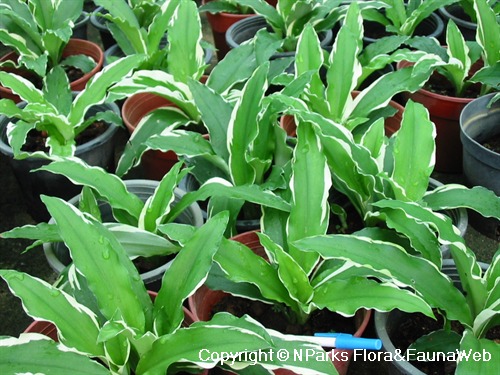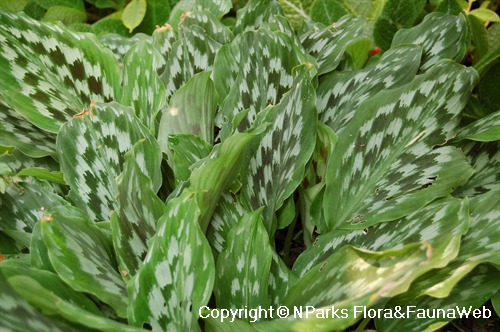.jpg)
Back
Kaempferia galanga
| Family Name: | Zingiberaceae |
| Common Name: | Cekur, Kencur, Sand ginger, Resurrection lily, 沙姜 (rhizome), 山奈 (whole plant) |
Name
Classifications and Characteristics
| Plant Division | Angiosperms (Flowering Seed Plants) (Monocotyledon) |
|---|---|
| Plant Growth Form | Herbaceous Plant |
| Lifespan (in Singapore) | Perennial |
| Mode of Nutrition | Autotrophic |
Biogeography
| Native Distribution | India to China and Indo-China |
|---|---|
| Native Habitat | Terrestrial |
| Preferred Climate Zone | Tropical, Sub-Tropical / Monsoonal |
Description and Ethnobotany
| Growth Form | Small, low-growing herb. |
|---|---|
| Foliage | The plant typically consists of 2-3 (occasionally up to 5) broadly elliptical to suborbicular leaves which occur in a rosette. The leaves are held horizontally, close to the ground and are hairless on top, but hairy below. |
| Stems | The rhizome, or underground horizontal stem, is white or yellowish and smells like camphor. |
| Flowers | The inflorescence is composed of 4-12, white tubular flowers. |
| Habitat | It occurs naturally in forest margins, open forest and bamboo forests at up to 1000 m above sea level. |
| Ethnobotanical Uses | Edible Plant Parts : Edible Leaves Food (Herb or Spice): In Malaysia, the leaves are chopped finely and added to salads for their flavour. In Bali, the rhizome is pounded and added to various dishes. In Thailand, the rhizome and leaves are added to fish curry. (Fruit or Vegetable): In Thailand, the young leaves are consumed raw with a spicy shrimp paste known as 'kapi kua'. Medicinal: In Malaysian traditional medicine, the rhizome is used to treat a variety of disorders, such as inflammation, sprains, ulcers, high blood pressure, asthma, colds, coughs and sore throats. The rhizome and leaves are pounded and applied as a poultice or lotion. Others: The rhizome is also used to make perfumes. |
Landscaping Features
| Desirable Plant Features | Ornamental Flowers, Fragrant (Foliage) |
|---|---|
| Landscape Uses | Container Planting, General |
| Thematic Landscaping | Economic Garden |
Plant Care and Propagation
| Light Preference | Semi-Shade |
|---|---|
| Water Preference | Lots of Water, Occasional Misting |
| Plant Growth Rate | Moderate |
| Rootzone Tolerance | Easy to Grow, Fertile Loamy Soils |
| Maintenance Requirements | Low |
| Propagation Method | Storage Organ (Rhizome), Division |
Foliar
| Mature Foliage Colour(s) | Green |
|---|---|
| Mature Foliage Texture(s) | Smooth, Glossy / Shiny |
| Foliar Type | Simple / Unifoliate |
| Foliar Arrangement Along Stem | Basal |
| Foliar Shape(s) | Non-Palm Foliage (Elliptical) |
| Foliar Venation | Parallel |
| Foliar Margin | Entire |
| Foliar Apex - Tip | Acuminate |
| Foliar Base | Rounded / Obtuse |
| Typical Foliar Area | Mesophyll ( 45cm2 - 182.25 cm2 ) |
| Leaf Area Index (LAI) for Green Plot Ratio | 3.5 (Shrub & Groundcover - Monocot) |
Non - Foliar and Storage
| Specialised Storage Organ(s) | Underground (Rhizome) |
|---|
Floral (Angiosperm)
| Flower & Plant Sexuality | Bisexual Flowers |
| Flower Colour(s) | Purple, White |
|---|---|
| Flower Texture(s) | Smooth |
| Flower Grouping | Cluster / Inflorescence |
| Flower Location | Terminal |
| Flower Symmetry | Bilateral |
| Individual Flower Shape | Tubular, Cruciform / Cross-shaped |
| Flowering Opening Time | Daytime |
| Flower Lifespan on Plant | 1 Day |
| Flowering Habit | Polycarpic |
Image Repository
Others
| Master ID | 869 |
|---|---|
| Species ID | 2164 |
| Flora Disclaimer | The information in this website has been compiled from reliable sources, such as reference works on medicinal plants. It is not a substitute for medical advice or treatment and NParks does not purport to provide any medical advice. Readers should always consult his/her physician before using or consuming a plant for medicinal purposes. |

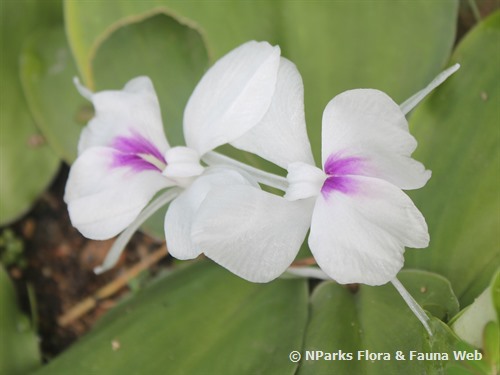
.jpg)
.jpg)
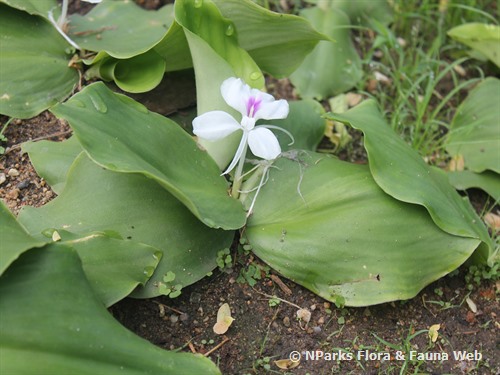
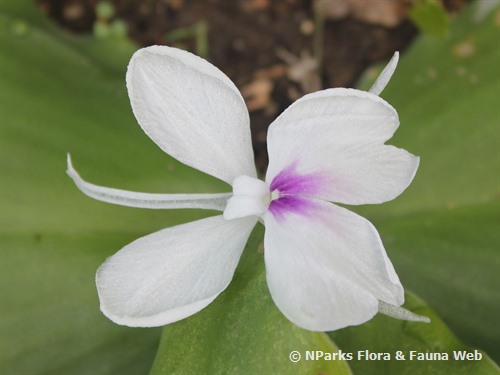

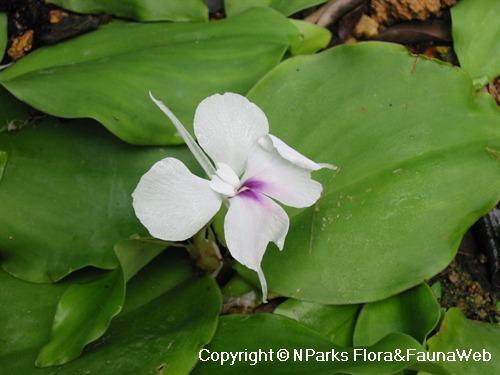

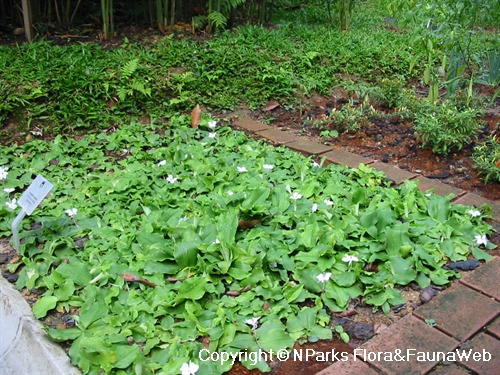
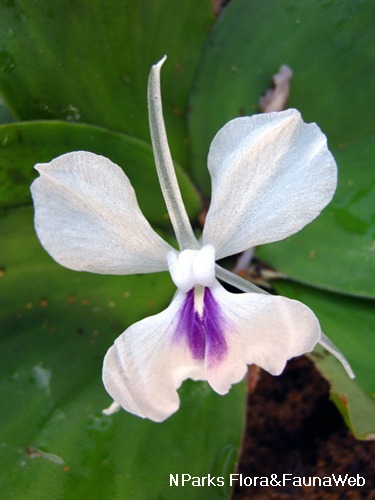
.jpg)
.jpg)
